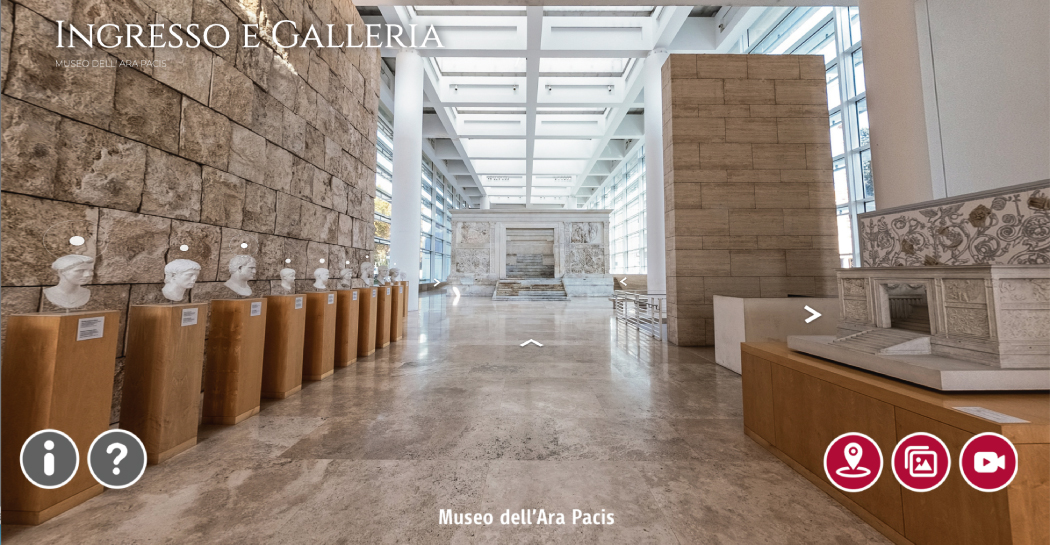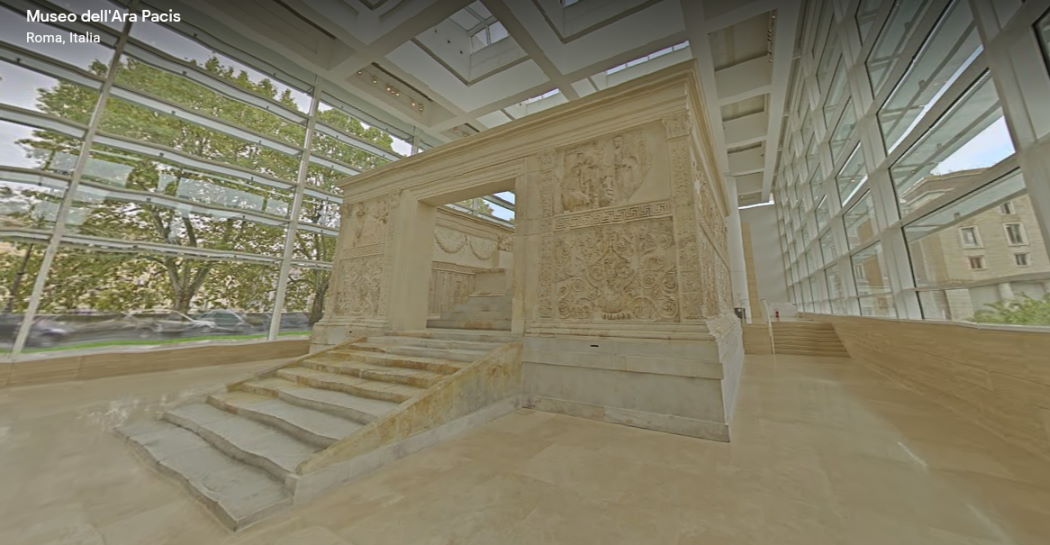Eno. The music of the mind
by Paolo Zaccagnini
A non-musician musician – this is how he describes himself. A much-loved genius, imponderable and ungraspable like his evanescent, multiform notes – this is the description which suits him better in my view. Brian Peter George St. John Baptiste de la Salle Eno, who on 15 May will turn sixty, and who has combined his impalpable world with that of the sculptor Mimmo Paladino at the Ara Pacis – a space suspended between history and present/future that has been reinvented and rediscovered by the New York (to be precise, Newark) architect Richard Meier – is an artist who has always managed to avoid pigeonholing, definitions and commercial packaging, an entity who is always, elegantly and enigmatically, travelling in search of the boundaries of knowledge.
Excuse me for digressing, but the idea of seeing him in action again makes me shiver with anticipation, even though I have had the pleasure of interviewing him on various occasions since I was first bowled over by him at a concert at the Teatro Brancaccio some thirty-five years ago. At the time he was with Roxy Music, the band he had set up with guitarist Phil Manzanera (with whom he was also to work in the future) and Bryan Ferry, the Beau Brummel of pop. This sense of excitement can partly be put down to nostalgia, of course, but is also amazement, because though he was at the very beginning of his musical journey at the time, it was already possible to discern, even in the hellish crush of their concerts, that he would go a long way. And not with the other musicians on stage with him. Roxy Music played what was defined as electronic pop, and the choice of the adjective ‘electronic’ – unusual and uncommon at the time – was entirely the fruit of the innumerable keyboards that a blonde Brian Eno caressed with class, curiosity, good taste, intelligence and technique. This old boy from Woodbridge, Suffolk is a Renaissance man born a few centuries late, who grew up fascinated by music and who, so the story goes, used to listen enraptured to the radio programmes broadcast by the US military base not far away from his home.
If rock n’ roll hands down just one name to the history of sophisticated music – but no, music is just music – it will be the name of Eno, who seems to have taken to heart the commandment adhered to by Niccolò Paganini: never repeat yourself. Always amaze and never disappoint. Since he started out in 1969 as a graphic artist and multimedia technician in London, he has chalked up forty-nine records in the space of thirty-six years (and I am sure that only Frank Zappa, with his prolific output, has outdone him in that respect). That figure perhaps give a measure of his artistic range, of the breadth of his horizons, and of the fascinating (and apparently impracticable) paths he has gone down with the invariable goal of achieving new sound, visual and human emotions.
It takes just a cursory look at the musical world to see how many solo artists and bands have benefited from Eno’s “grey cells”, as Agatha Christie would put it: Robert Fripp, for whom Eno once did an audition as a singer, and although he did not get through it, the cantankerous Fripp was so struck by Eno that he was keen to get the new-born Roxy Music signed up with the record company he had at the time, and the two musicians subsequently worked together on various occasions; David Bowie, in the period of voluntary exile in Berlin, in Low and Heroes, with Fripp on the guitar, and then Lodger in 1995 in Outside; Peter Gabriel; the Brazilian guitarist Arto Lindsay; David Byrne’s Talking Heads; the singer Nico and bass guitarist John Cale of Velvet Undergound; the Canadian guitarists and producers Michael Brook and Daniel Lanois; the avant garde musicians Harold Budd and Jon Hassell, with whom, together with Kevin Ayers, he initiated ambient music;
Laurie Anderson; U2 – he produced The Unforgettable Fire, their first worldwide success, and is now working with them on their next album, besides that of Coldplay; James; the futuristic Devo; guitarist Tom Verlaine’s Television, the aristocracy of American punk; Ultravox; Depeche Mode; and Primal Scream. And those are just the most well-known names.
As if that was not enough for him, he also had the idea of setting up Opal, which, given the mass of talents surrounding him, proved to be a very successful artistic agency. A number of top-flight musicians, including his brother Roger, Daniel Lanois and Michael Brook after their experience with Martha & The Muffins and the former Led Zeppelin bass player, John Paul Jones, all collaborated.
Is that enough? No? Well, in that case there is Eno’s work for the cinema, including the soundtrack for Wim Wenders’ Until the End of the World, the quality TV serial, the music accompanying all the episodes of the cult-status X Files. He organizes uninterruptedly – but this, like his hyperactivity in the field of music, has never been to the detriment of quality – exhibitions and performances, he sculpts, produces ideas for installations and he even wrote the music that opens Windows 95. All this is a clear demonstration that there have never been any limits to his artistic vocabulary.
Brian Eno has already done an exhibition with the humbly reserved artist Mimmo Paladino, ten years ago in the basement of the Roundhouse at Chalk Farm in London. A former depot where British Rail train carriages were washed and cleaned, in the 60s and 70s the Roundhouse was London’s most atmospheric, unusual and best-frequented rock venue, both in terms of audiences and performers. The Paladino-Eno collaboration was called I Dormienti (Sleepers). And their compositions, the combination of their respective arts, yearnings, skills and dreams, which arose out of a brief but very fruitful encounter that sparked the idea of combining forces, and which, given that Eno does not speak Italian and Paladino does not speak English, involved few words and lots of gestures, worked. The setting this time is very different and very prestigious, and also takes on board the glory – and the human and funerary story of those who really made Rome great – of the first Emperor, Gaius Julius Caesar Octavanius Augustus, born Gaius Octavius Thurinus, and the expertise of the rationalist architect Richard Meier, whose rigorous philosophy is expressed in pure, geometric forms, of which the Ara Pacis complex is a fine and illuminating example. Together they have set out in the direction of new and unexplored territory. Eno, as is his custom, does not announce his work in advance and is fond of surprises. But you can be sure that he will not just come bearing music, but also forms, metal flowers that will bloom and emit sounds and the like, all of which will be interwoven with Paladino’s train and other creations.
Fine fare for the ears and eyes. But only for them? No. For the whole body and mind. A meeting of two worlds, Brian’s and Mimmo’s, one sonorous and the other visual, undoubtedly different in terms of gestation, birth, growth and development. Capable, I am sure, of stirring in visitors to the show an impelling desire to explore, to ask questions, to dare, to know and to roam further and further afield, as advocated by Ken Kesey, the author of One Flew Over the Cuckoo’s Nest, during his travels across the United States in the wonderful years of American counterculture. Desire and yearning – ever since the first clumsy, uncivilized and rough hominid stood up and painted or scratched the wall of his cave shelter, this has been, and always will be, whatever art dealers past and present, inside and outside the temple, might say, the only genuine foundation of art.







































